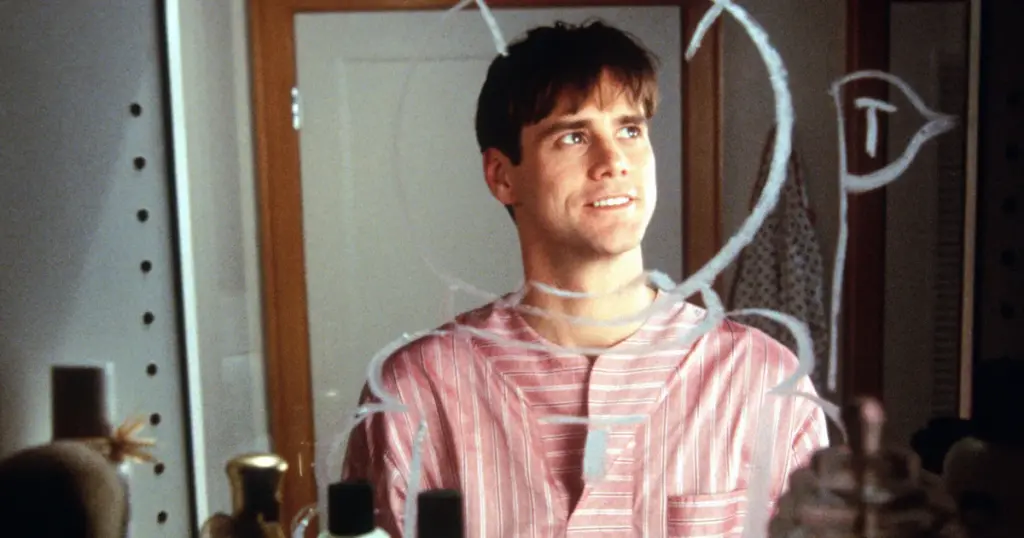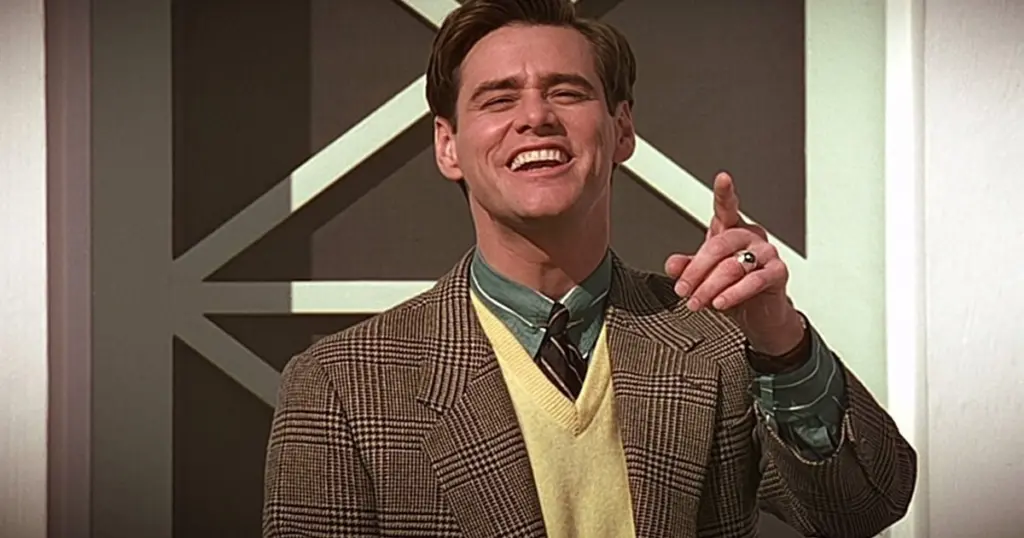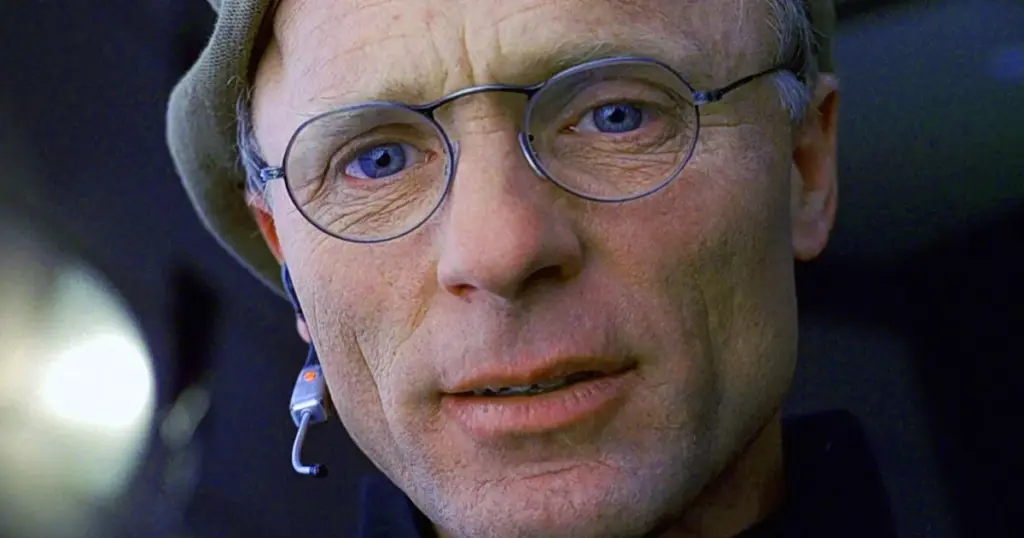Given how far reality television has come in the last 25 years, it’s hard not to think about how director Peter Weir’s 1998 film The Truman Show prophesized the TV format’s commercial prosperity. Nowadays, cameras are ubiquitous and with the prevalence of social media platforms and everyone’s persistently online existence, ordinary citizens can feel like the star of their own show broadcast publicly 24/7.
The Truman Show deserves at least some credit, some might even say blame, for ushering in the addictive spectacle of watching people’s lives unfold in real-time, day after day, as a popular form of 21st century entertainment. The big difference, of course, is that most reality show and social media stars are willing participants in their recorded stories.
But in the days before “Survivor” and “Big Brother” and the entire reality genre were omnipresent, how did The Truman Show itself become a reality?
Development on The Truman Show began in 1991 when fledgling screenwriter Andrew Niccol wrote a one-page treatment titled The Malcolm Show. Niccol’s original story was more speculative science-fiction, set in a simulacrum of New York City, with a much darker tone than what would eventually get made. Niccol later said he conjured the idea after thinking that: “everyone questions the authenticity of their lives at certain points, like when kids ask if they’re adopted.”
After Niccol spent two years fleshing out the script, a brief bidding war took place in Hollywood before power producer Scott Rudin purchased the rights for a healthy $1.5 million. At the time, part of the deal included Niccol attached as director, with Gary Oldman considered to star. But with a massive $80 million budget estimated for such a bold project, which Paramount dubbed “the most expensive art film ever made,” the studio was uncomfortable with an unproven first-time filmmaker. Established A-list directors were then sought for the ambitious satire, with Niccol getting extra cash to step aside but retain a producer credit (he would make his debut with the acclaimed Gattaca which would be released before The Truman Show).
Brian De Palma entered negotiations to direct in 1994, but had a falling out with his agency and the deal fell apart. Several other talented directors were then considered, including Steven Spielberg, Tim Burton, David Cronenberg, Terry Gilliam, Sam Raimi, and Barry Sonnenfeld. Bryan Singer voiced his desire to direct, but Paramount wanted a more seasoned filmmaker. Ultimately, director Peter Weir was suggested by Niccol. Despite acclaimed works like Witness and Dead Poets Society, Weir had taken a break after the commercial failure of the 1993 Jeff Bridges drama Fearless. He was looking for a challenge for his next project but had only been approached with derivative screenplays until he found himself haunted by Niccol’s fresh and subversive concept.

But it was the star that invariably convinced Weir to make the picture. Weir had seen Jim Carrey in Ace Ventura: Pet Detective and thought he had the “charm” and “energy” of Charlie Chaplin. Carrey had already seen the script, and was also impressed with how Weir had revealed Robin Williams’ abilities as a dramatic actor. Ironically, Andrew Niccol had originally pictured Williams for the lead role. But Weir and Carrey immediately hit it off when they met, and the actor saw it as an opportunity to break from his slapstick style and expand his dramatic skills, even cutting his then-record-setting $20 million asking price down to $12 million for the movie.
There was a catch, however – Carrey’s schedule would already be booked for a year with The Cable Guy and Liar Liar. Rather than recast, Weir used the time to work on the story and change the dark, depressing tone of Niccol’s original script to make it a much lighter, funnier, and more accessible film. For instance, Truman was initially an alcoholic, and staged crimes like sexual assault were part of his reality experience. And in Niccol’s original ending, Truman finds Cristof and the cast of actors on a rooftop and violently attacks the director until the others physically restrain him.
The long wait for Carrey allowed Niccol to rewrite and fine-tune every minute detail to Weir’s liking, eventually cranking through at least 16 drafts. Painstaking efforts were made to build a very specific world and create an air-tight logic pertaining to the rules of Truman’s universe. To make it believable, Weir tried to consider and answer every possible question that an audience might ask.
Weir also wanted to make something that “could convince audiences they could watch a show in this scope 24/7,” and he believed that in order to work it had to be “enlivening, therapeutic, charming, and have a relaxing quality”. Weir also came up with detailed backstories on the show and its main characters, including Cristof, who Weir envisioned as a filmmaker who had previously won an Oscar for making a sympathetic documentary about the homeless. This would provide the actors with a rich blueprint for their characters and allowed them to further immerse themselves in the roles.
The director also felt it was paramount to change the setting of the film from New York City to a pristine utopia where the sun always shines. Initially, the plan was to shoot entirely on a studio backlot in Los Angeles. But Weir’s wife Wendy suggested Seaside, Florida, a tiny coastal community of about 400 houses that looked so much like a prefabricated movie set that Disney later built its own replica nearby. As soon as Weir saw Seaside, he knew he found the movie’s fictional setting of Seahaven Island. The town already had picturesque ¾-scale houses with 1950s-style picket fences to reinforce the sense of the American Dream.

But Seaside was an affluent and exclusive community, whose founder asked for an absurd $5 million to film in his serene coastal town. Lengthy negotiations ensued, with Paramount pressuring the director to change locations at a much cheaper cost, but Weir insisted that Seaside was the only place for The Truman Show, and things were inevitably worked out.
That wasn’t the end of the complications for Seahaven, however. Despite the area providing a nearly perfect set, some construction was required to fill out the downtown area. But due to local construction code, the production could not build structures higher than 35 feet. To overcome this, only the first floor of each new building was physically built, with higher floors later added with CGI, which actually proved cost-effective for the production.
With a still-risky budget of $60 million, principal photography on The Truman Show commenced in December 1996. To recreate the distinct look of televisions in the days before widescreen LCDs were commonplace, Weir shot for the 1.66:1 aspect ratio, but only the original DVD release would retain that format with the theatrical and other home releases getting cut for the more standard aspect ratio.
Along with cinematographer Peter Biziou and production designer Dennis Gassner, Weir took inspiration from various TV commercials, which is why so many characters are seen leaning into the frame with wide eyes, and why so many interiors feel overly lit and slightly manufactured. For Weir, it was important to remind the audience that, “in this world, everything is for sale.” Norman Rockwell paintings and postcards from the 50s and 60s also influenced the film’s aesthetic and performances.
Weir credits Biziou with contributing several fantastic creative ideas, including the placement of cameras in many scenes. Based on his love of silent films, Weir opted to use the iconic iris or gobo effect around the edges of the frame to make it appear as if the audience is watching Truman on hidden surveillance footage. Weir enjoyed playing with the frame, saying “there are practically no tracking shots, logically. Cameras are handheld inside baskets of fruit or briefcases, there were a lot of zooms and static lenses and occasionally we would make an awkward framing as a result of not ideal camera placement.” Still, Weir had to show restraint and use these techniques judiciously or else it would become too distracting for the audience.
Carrey’s unwitting reality star would be joined by Laura Linney as his wife and Noah Emmerich as his lifelong best friend, with both real actors playing fictional actors playing fictional characters, much like the entire population of Seahaven. Linney studied old Sears & Roebucks catalogs to perfect her product placement posing. Both actors were fully immersed in the process, even living in the real town that served as the set, with Emmerich noting that once on his day off, he was standing in his living room in his bathrobe and got a call saying “Noah, get out of the way, you’re in the shot.’” It turned out they were shooting down the street and could see him walking around in his window. Emmerich called the entire experience “a phenomenal blur between storytelling and living. It’s every actor’s dream to live on the set, to live in the costume, in the character.”
Casting one other main character proved difficult, although not right away. For Christof, the man directing Truman’s life from behind the scenes, Dennis Hopper was originally cast in the role, but he was released on the second of filming due to creative differences. After Hopper’s departure, the filmmakers raced to find a suitable replacement, with only days to secure a new actor or the production would be shut down!
A mad dash to find a worthy substitute ensued, with several actors like Jack Nicholson and Jonathan Pryce declining the part. Ed Harris’ agency reached out to the filmmakers to gauge interest, and luckily the actor lived nearby in Florida, and Weir hurried to meet with him immediately. The director was so taken with Harris that he offered him the role on the spot, getting him fitted for wardrobe before an official deal was even closed.

With just days to prepare before cameras rolled, Harris’ initial idea was for Christof to have a hunchback, envisioning him to be overcompensating for his own painful and humiliating childhood by giving Truman a much kinder, ideal existence. But after a makeup and wardrobe test with a small hunch, both Harris and Weir ultimately thought it was too ridiculous and discarded the idea. Despite the lack of preparation time, Harris claimed that it was a blessing in disguise, allowing him to give a more instinctual performance that suited the character.
Here’s the craziest part: Jim Carrey and Ed Harris never actually met on the set of The Truman Show. All of Christof’s scenes were filmed back in Los Angeles on a Paramount Studios sound stage, long after Carrey had wrapped. Ironically, Dennis Hopper would go on to play a supporting role in Ron Howard’s similarly themed Edtv, released in 1999 to far less success than The Truman Show.
The Christof situation wasn’t the only concern during production. Although Jim Carrey was nervous about working with a renowned dramatic director like Peter Weir, he also had a clause in his contract allowing him to demand rewrites if he was unsatisfied with the material. At first, this created tension between Carrey and Weir despite their mutual respect for one another’s artistry. But over time, Weir became more comfortable with Carrey’s improvisations and the two forged a more productive relationship. For example, the iconic Trumania sequence in the bathroom mirror was ad-libbed by Carrey based on similar ways he entertained himself as a child.
One amusing side note: to help maintain Carrey’s focus while on set, the other actors were all barred from reciting any lines from Carrey’s previous hit comedies.
Another challenge proved to be the movie’s effects, as in 1997 the industry standard was right in the midst of shifting from practical FX to CGI. Fortunately, not much detailed computer-generated assistance was necessary due to the artificial look of the Seahaven set, with many necessary additions consisting of traditional matte painting. The movie’s unforgettable final sequence was filmed in a giant cyclorama water tank at Universal Studios backlot to simulate the ocean that Truman sails across, and the sudden end of his journey. However, because the tank was located outside, the camera would often pick up reflections from the actual sky rather than the production’s mural painting, but the available CGI tools were advanced just enough for the FX team to use digital composites to clean up inconsistencies.
Paramount was also struggling to figure out a release date. The original plan for August 1997 would be too tight for post-production, and even pushing to Thanksgiving still wouldn’t allow enough time, sending it to the less-competitive President’s Day weekend in February 1998. The studio also wanted their expensive new drama to have further distance from The Cable Guy, which had been marketed as “the other side of Jim Carrey” but ended up a box office disappointment.
The Truman Show was finally released on June 5, 1998 and was a massive commercial hit, opening with $44.5 million on its first weekend before eventually collecting $264 million worldwide. The film earned critical accolades and award recognition, including two BAFTA victories and three Oscar nominations – although none for star Jim Carrey, who would continue his dramatic career without ever being even acknowledged by the Academy.
In the years since its release, The Truman Show has been the subject of much analysis and interpretation. Some see Christof as the manifestation of Lucifer due to his devilish puppeteering and egomaniacal exploitation of Truman Burbank, whose own name indicates he’s a Hollywood product of Burbank, California, the famous studio enclave where the film’s Seaheaven dome exists.
In addition to various biblical references, the underlying themes of The Truman show have been likened to the allegory of Plato’s Cave in how it blurs the line between reality and fiction. Other literary references include Thomas More’s 1516 book Utopia, which describes an idyllic island with only one entrance and exit, and C.S. Lewis’ Narnia novel Voyage of the Dawn Treader, which ends with a ship sailing to the edge of the world only to encounter a sky-blue wall with a doorway to return to the real world.
In 2008, a phenomenon known as The Truman Show Delusion was coined by New York psychiatrist Joel Gold in reference to patients who believed their lives were actually reality TV shows, with some happy to be the center of attention while others felt tormented. When writer Andrew Niccol learned of this, he joked: “You know you’ve made it when you have a disease named after you.” Unfortunately, given the preponderance of social media since then, the notion of everyday citizens starring in their own recorded content has only become more commonplace.
Whether The Truman Show is responsible for predicting the addictive nature and schadenfreude of modern reality TV and social media trends is another discussion. What’s clear, however, is that The Truman Show gave the world the first glimpse at Jim Carrey’s dramatic acting ability, and the profound meta story of a man as the oblivious center of audience attention still has much to offer. The film is currently ranked #137 on IMDb’s Top 250 Movies of all time, among company like Unforgiven and Casino, indicating its critical and commercial popularity has only grown over the past 25 years, just as the subject matter has become all the more relevant.

